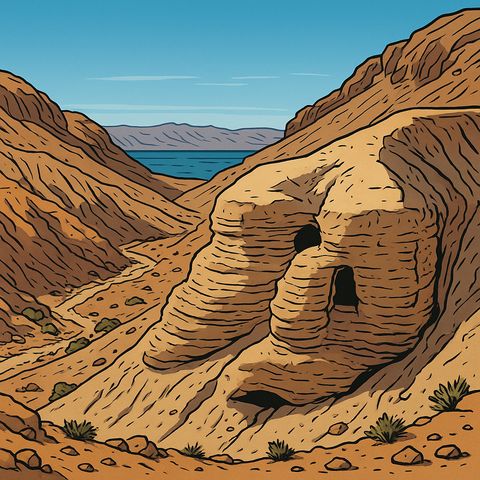
The Dead Sea Scrolls
Have you ever wondered what the Bible looked like 2,000 years ago? Well, thanks to an incredible discovery in the Judean Desert, we don’t have to wonder anymore. The Dead Sea Scrolls give us a remarkable window into the ancient world of Biblical texts.
These ancient manuscripts, some dating back to the 3rd century BC, represent the oldest known Bible texts in existence. They’ve completely changed our understanding of how the Bible was transmitted through history.
What Are the Dead Sea Scrolls?
Picture this: thousands of fragments from nearly 900 different scrolls, carefully hidden in desert caves over two millennia ago. They include portions of every Old Testament book except Esther, plus numerous other Jewish religious texts.
The scrolls were written in Hebrew, Aramaic, and Greek, giving us unprecedented insight into the various text traditions that existed in Jesus’ time.
Here’s the important part: some important passages match the Greek Septuagint’s readings rather than our current Hebrew text.
A few additional variants are also found there, showing that there were already different versions of certain books circulating in Jesus’ time.
Timeline
Ancient History (150 BC - AD 68)
- Around 150 BC: The Essene community begins settling at Qumran.
- 150 BC - AD 68: Scribes carefully copy biblical and religious texts.
- AD 68: As Roman armies approach, the community hides their precious scrolls in nearby caves.
- AD 70: The Qumran community is destroyed during the First Jewish Revolt.
The Modern Discovery
- 1947: Bedouin shepherds accidentally discover the first scrolls in Cave 1.
- 1948-1956: Intensive search reveals 11 caves containing manuscripts.
- 1947-1967: Initial publication of seven major scrolls.
- 1954: An advertisement in the Wall Street Journal offers ‘The Four Dead Sea Scrolls’ for sale!
- 1967-1990: Limited access period - only small team allowed to study scrolls.
- 1991: Biblical Archaeology Review publishes unauthorized photographs.
- 1991-2001: All scroll fragments finally made available to researchers.
- 2011: Digital Dead Sea Scrolls project launched.
- 2016: New cave discovered (Cave 12).
- 2021: Additional fragments found in the ‘Cave of Horror’.
Why Are They Important?
The Dead Sea Scrolls are a treasure trove of biblical validation. Here’s why they matter:
Text Verification
Remember those changes we mentioned in our article about the Septuagint? The Dead Sea Scrolls often, but not always, confirm the Septuagint’s readings against the later Hebrew Masoretictext, supporting the claims of early Christians that the Hebrew text had suffered from corruption.
Historical Context
These scrolls give us an unprecedented look at Judaism during Jesus’ time. They help us understand the religious environment in which Christianity emerged and show us how the Bible was being read and interpreted.
Manuscript Dating
The scrolls provide crucial evidence for dating biblical texts. Some manuscripts are over a thousand years older than our previously oldest Hebrew copies!
The Impact on Biblical Studies
The Dead Sea Scrolls have revolutionized our understanding of biblical text history. They’ve shown us that multiple text traditions existed side by side in ancient times, and they’ve helped confirm the reliability of ancient translations like the Septuagint.